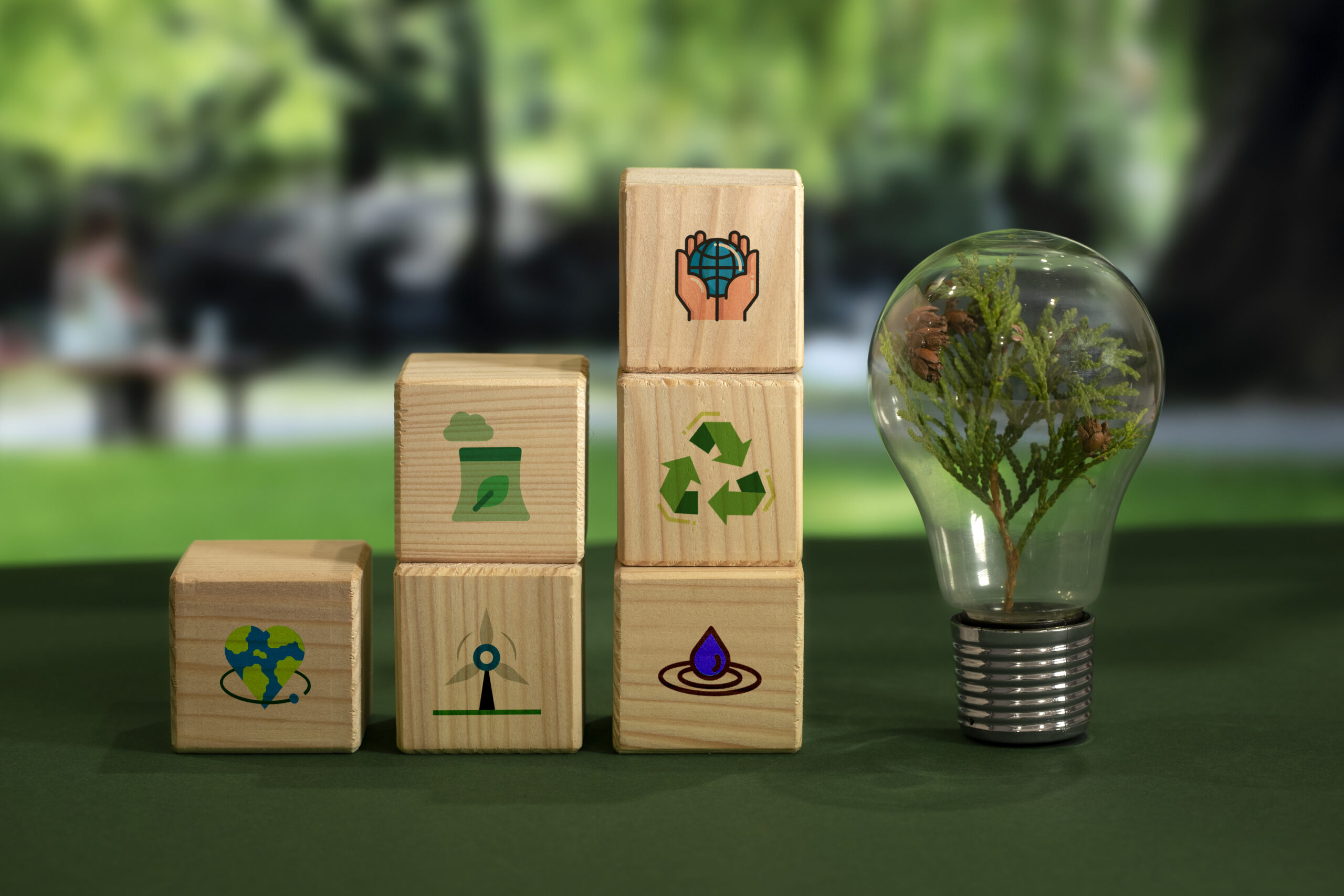The ESG Integration Gap: Why Strategy Still Lags Execution The ESG Integration Gap: Why Strategy Still Lags Execution admin • November 6, …
Embracing Circularity in the Textile Industry
The global textile and apparel industry is among the most resource-intensive sectors—demanding large volumes of water, energy, and raw materials while generating substantial waste and pollution. As the climate crisis deepens, there is growing pressure on textile producers, brands, and consumers to reduce environmental impact and transition toward sustainable production models.
One of the most promising frameworks gaining global traction is the Circular Economy (CE), which emphasizes reuse, recycling, and regeneration to create a closed-loop system that minimizes waste and maximizes resource efficiency. When coupled with clean energy integration, this model offers a powerful path to transforming textile manufacturing worldwide.
The circular economy challenges the traditional “take, make, dispose” model by shifting to regenerative production and consumption systems. In textiles, this involves designing longer-lasting garments, promoting repairability, and ensuring materials can be recovered and reused. Instead of ending up in landfills or incinerators, textiles are continuously cycled back into the value chain—supporting a more resilient and responsible industry.

Key Principles of Circular Economy in Textiles
Designing for Durability and Repair
A core aspect of circular fashion is designing clothes that last. Durable fabrics, modular construction, and repair-friendly design enable longer garment life and discourage the fast fashion cycle. This not only reduces waste but also encourages mindful consumption.
Recycling, Reuse, and Upcycling
Circular textiles prioritize material recovery. This includes breaking down used garments for fiber-to-fiber recycling or repurposing them into new products. Reuse strategies—such as clothing rental, resale, or swapping—extend product life, while upcycling transforms old items into creative new pieces. However, recycling remains technologically complex, especially for blended fabrics, and innovation in this area is key to unlocking large-scale circularity.
Closed-Loop Production Systems
Closed-loop systems collect post-consumer textile waste and feed it back into the manufacturing process as raw material. This zero-waste model reduces reliance on virgin inputs and significantly lowers the carbon and resource footprint of fashion production.
Ethical Sourcing and Sustainable Materials
Beyond end-of-life strategies, circularity also begins at the sourcing stage. Using renewable, biodegradable, or recycled materials such as organic cotton, hemp, bamboo, or recycled polyester helps reduce water use, emissions, and pollution. Ethical sourcing ensures that the materials used align with human rights and environmental standards across the supply chain.
Clean Energy in Textile Manufacturing
While circularity tackles material waste, clean energy addresses the carbon intensity of textile production. The sector is heavily reliant on fossil fuels, contributing significantly to global greenhouse gas emissions. Transitioning to renewable energy—such as solar, wind, or hydro power—is essential to decarbonizing operations.
Clean energy not only helps lower emissions but also improves factory efficiency and long-term cost-effectiveness. Investments in energy-efficient technologies, such as low-impact dyeing systems or heat recovery infrastructure, further enhance environmental performance. Globally, leading manufacturers are already adopting these changes, setting a precedent for industry-wide transformation.
Global Benefits of a Circular and Clean Energy-Powered Textile Sector
Environmental Gains
Circular practices and clean energy adoption drastically reduce textile waste, carbon emissions, and water usage. This shift is vital for protecting ecosystems, mitigating climate change, and ensuring long-term planetary health. As climate-related risks intensify, embedding sustainability into textile systems is no longer optional—it’s essential.
Economic Opportunities
Circular business models create new value streams—be it from recycling, resale, or upcycling. They also open avenues for job creation in repair, logistics, materials innovation, and waste management. Clean energy can reduce operational costs over time, increasing competitiveness and resilience.
Innovation and Competitiveness
Companies that embrace circular design and clean energy are better positioned to lead in a sustainability-focused global market. From developing closed-loop fabrics to implementing smart energy systems, innovation thrives under environmental constraints—unlocking future-ready solutions.
Aligning with Consumer Demand
Consumers globally are demanding transparency, ethical practices, and sustainable alternatives. Fashion brands that commit to circular and low-carbon practices are more likely to attract and retain environmentally conscious customers—building brand loyalty and long-term trust.
Challenges to Global Implementation
Despite the advantages, scaling circular and clean-energy practices across the global textile industry faces several hurdles:
-
Infrastructure Gaps: Inadequate systems for textile collection, sorting, and recycling exist in many regions, limiting material recovery.
-
High Transition Costs: Adopting sustainable materials and renewable energy technologies can be capital-intensive, particularly for small and medium-sized enterprises.
-
Lack of Awareness: Many manufacturers and consumers remain unaware of circular principles or underestimate their impact.
-
Policy and Regulation Gaps: Global textile regulations often lag behind sustainability goals, and incentives for circular economy adoption are still limited in many countries.
-
Technological Limitations: Recycling technologies for mixed or blended textiles remain underdeveloped and need significant investment and innovation.
Conclusion
Transitioning the global textile industry toward a circular and clean-energy-powered future is both a challenge and an opportunity. By redesigning products for longevity, investing in material recovery, and decarbonizing manufacturing processes, the industry can reduce its massive environmental footprint and reshape the future of fashion. As sustainability becomes a global business imperative, circularity and clean energy are no longer niche strategies—they are essential pillars of resilience, innovation, and impact. The path to a regenerative, inclusive, and climate-aligned textile economy is clear—and the time to act is now.
Bridging Strategy and Sustainability: A Playbook for Forward-Looking Leaders Bridging Strategy and Sustainability: A Playbook for Forward-Looking Leaders admin • November 6, …
Why 2026 Will Be the Year of ESG Reinvention Why 2026 Will Be the Year of ESG Reinvention admin • November 6, …
The Rise of the ‘Sustainability Operating Model’ — And What It Means for Boards The Rise of the ‘Sustainability Operating Model’ — …
From Intent to Implementation: The Future of Purpose-Driven Performance From Intent to Implementation: The Future of Purpose-Driven Performance admin • November 6, …
How ESG is Redefining Corporate Value in the Next Decade How ESG is Redefining Corporate Value in the Next Decade admin • …
Embedding Sustainability in Strategy: Lessons from Systems Thinking Embedding Sustainability in Strategy: Lessons from Systems Thinking admin • November 6, 2025 • …
How ESG is Redefining Corporate Value in the Next Decade How ESG is Redefining Corporate Value in the Next Decade admin • …
Designing for Impact: The New Blueprint for ESG-Ready Business Models Designing for Impact: The New Blueprint for ESG-Ready Business Models admin • …









